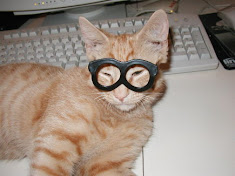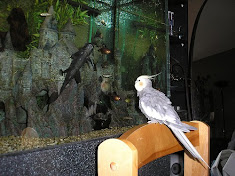Five element horse temperament typing can help you if your horse gets a painful injury because different types will respond differently and you need to be able to anticipate these reactions. It is important to consider your horse's temperament when you examine and treat the injury to avoid further damage to your horse and yourself. In my vet career I have seen so many cases where a horse was slightly injured but became seriously injured by poor handling. Here are some things to consider for each Five Element horse temperament.
Fire - These horse temperaments have very low pain thresholds and will be very sensitive around even mild wounds. Fire horses are generally polite and will not try to hurt you as you examine and treat there wound but you will want to go slowly and assure them you will not hurt them more. Don't hesitate to reach for mild sedation to clean and treat injuries in the Fire horse temperament if what you need to do is going to be painful. Over restraining this horse temperament in stocks or tight spaces can cause them to panic and further injure themselves. A twitch may work for a very quick procedure if sedation is not an option but don't expect it to help with extended painful treatments.
Earth - Earth horse temperaments can handle pain quite well and they tend to be very cooperative in being treated. Minor injuries can usually be treated with no sedation and minimal restraint. These horse will rarely try to hurt anyone if they are handled with calm purpose to get the wound managed. Earth horse temperament individuals have a tendency to get excessive swelling in the injured tissues so wrap the injury when possible. Hand walking as soon is possible is good to keep these horses moving to improve circulation because left to their own devices they will tend to stand around and not exercise.
Metal - Metal horse temperaments tolerate the best of all horse temperaments because they have very high pain thresholds. If they are used to being handled they need little or no sedation or restraint for even moderate injuries. Metal horse temperaments do, however, tend to develop excessive scar tissue so it is important to stabilize lower leg wounds with heavy bandages or casts. Extra vit E and selenium horse supplements can be good to help with healing. After the injury appears healed be sure there is not scar tissue restricting the surrounding tissues.
Water - This horse temperament does not handle pain well and they panic even with the anticipation of pain. Don't even think about trying a twitch on this type horse because you will simply bring up their fear level. Go for moderate sedation and if this is not possible try a blindfold and other non painful distraction. Stocks are not recommended and if the horse must be restrained without sedation a scotch hobble with a quick release knot can be tried along with a blindfold and lots of calm stroking and voice reassurance. Aconite is a homeopathic remedy that can be used if the horse is more afraid than badly injured.
Wood - Wood horse temperaments are generally not overly concerned with the pain from an injury but they will because of their nature often resist treatment aggressively. If you have a stock, put the Wood horse temperament in it for your protection. Use moderate to strong sedation if any painful or prolonged procedure is required. The endorphins released from correct application of a twitch can help mellow out an injured Wood horse and make them less combative. A twitch applied improperly will just bring on or escalate a fight. If possible, do not bandage a lower leg injury in the Wood horse so you do not have to face multiple fights to get it changed.
Taking an extra minute to consider the horse temperament you are dealing with and you can make the treatment of injuries safer for the horse and handler.
Author Resource: Madalyn Ward, DVM, is a recognized author and veterinarian in the field of holistic horsekeeping. For free tips on horse health, horse personality types, and horse nutrition, plus one-stop shopping on holistic horse products, visit http://www.BuyHolisticHorse.com and her blog.
 |
| Horse Having Its Wounds Treated by Kate Sumbler |
Earth - Earth horse temperaments can handle pain quite well and they tend to be very cooperative in being treated. Minor injuries can usually be treated with no sedation and minimal restraint. These horse will rarely try to hurt anyone if they are handled with calm purpose to get the wound managed. Earth horse temperament individuals have a tendency to get excessive swelling in the injured tissues so wrap the injury when possible. Hand walking as soon is possible is good to keep these horses moving to improve circulation because left to their own devices they will tend to stand around and not exercise.
Metal - Metal horse temperaments tolerate the best of all horse temperaments because they have very high pain thresholds. If they are used to being handled they need little or no sedation or restraint for even moderate injuries. Metal horse temperaments do, however, tend to develop excessive scar tissue so it is important to stabilize lower leg wounds with heavy bandages or casts. Extra vit E and selenium horse supplements can be good to help with healing. After the injury appears healed be sure there is not scar tissue restricting the surrounding tissues.
Water - This horse temperament does not handle pain well and they panic even with the anticipation of pain. Don't even think about trying a twitch on this type horse because you will simply bring up their fear level. Go for moderate sedation and if this is not possible try a blindfold and other non painful distraction. Stocks are not recommended and if the horse must be restrained without sedation a scotch hobble with a quick release knot can be tried along with a blindfold and lots of calm stroking and voice reassurance. Aconite is a homeopathic remedy that can be used if the horse is more afraid than badly injured.
Wood - Wood horse temperaments are generally not overly concerned with the pain from an injury but they will because of their nature often resist treatment aggressively. If you have a stock, put the Wood horse temperament in it for your protection. Use moderate to strong sedation if any painful or prolonged procedure is required. The endorphins released from correct application of a twitch can help mellow out an injured Wood horse and make them less combative. A twitch applied improperly will just bring on or escalate a fight. If possible, do not bandage a lower leg injury in the Wood horse so you do not have to face multiple fights to get it changed.
Taking an extra minute to consider the horse temperament you are dealing with and you can make the treatment of injuries safer for the horse and handler.
Author Resource: Madalyn Ward, DVM, is a recognized author and veterinarian in the field of holistic horsekeeping. For free tips on horse health, horse personality types, and horse nutrition, plus one-stop shopping on holistic horse products, visit http://www.BuyHolisticHorse.com and her blog.

























